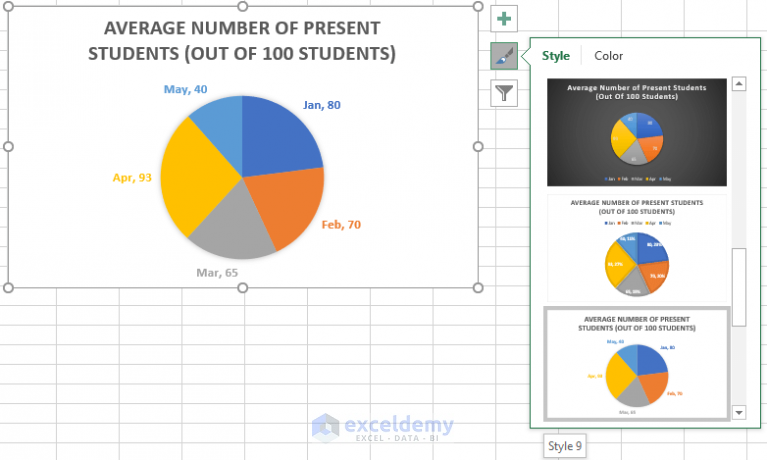

Select the condition that you want to apply and click OK. Click on Conditional Formatting and a new window will open up. To use conditional formatting in excel, select the cells that you want to format and go to theįormat tab. You can then drag and drop fields to rearrange the layout as you want. The data will be automatically divided into rows and columns in the pivot table. Select the location where you want to insert the table and click OK. Go to the Insert tab and click on PivotTable. To use pivot tables in excel, select the data that you want to include in the table.
#How to filter data and create pie chart in excel how to#
How to use a pivot table and conditional formatting in excel: You can then customise the appearance of your pie chart by changing the colours, adding labels, etc. To create a pie chart, select the data you want to visualise and then click Insert > Pie Chart.Įxcel will automatically generate a pie chart based on your data. The pie chart is one of the most commonly used charts in Excel. You can use a scatter plot to find patterns or to predict future values. The dots in the scatter plot will show how the two values are related. Scatter Plots:Ī scatter plot is a type of chart that shows how two values are related. Pie charts are often used to show how different parts make up a whole. Pie Charts:Ī pie chart is a type of chart that shows how much of a whole is taken up by different parts. You can use a line chart to track progress or to show how two values are related. The lines will show how the value changes over time.

Line Charts:Ī line chart is a type of chart that uses lines to connect data points. You can use a bar chart to compare different values or to show how a value changes over time. The height of the bar indicates the value for that data point. Bar Charts:Ī bar chart is a type of chart that uses bars to represent different values. Some of the most common types of charts are bar charts, line charts, pie charts, and scatter plots. There are many different types of charts that you can use in Excel, and the type of chart that you choose will depend on the data that you have and what you want to do with it. Then, go to the Home tab and click on Conditional Formatting. To use conditional formatting, select the data that you want to format. You can use conditional formatting to colour cells based on their values. Conditional Formatting:Ĭonditional formatting is a way to highlight data in Excel. Then, go to the Data tab and click on Filter. To filter data, select the data that you want to filter. Filter:įiltering is a way to narrow down data in Excel. Then, go to the Data tab and click on Sort. To sort data, select the data that you want to sort. You can sort data alphabetically or numerically. Sorting is a way to organise data in Excel. Then, go to the Insert tab and select Pivot Table. To create a pivot table, you first need to select the data that you want to include in the table. Pivot tables can also be used to filter data. They can be used to calculate sums, averages, counts, and other statistical measures.

Pivot tables are a powerful tool that can be used to summarise data. Then, go to the Insert tab and select the type of chart that you want to create. To create a chart, you first need to select the data that you want to include in the chart. Excel offers a wide variety of chart types that can be customised to meet your needs. Charts:Ĭharts are used to visualise data. It offers many features that make it an essential tool for businesses and individuals. Let’s get started! A Brief Description About ExcelĮxcel is a powerful spreadsheet application that can be used for data analysis, modelling, and calculation. We will also provide some useful tips that will help you get the most out of these features. In this article, we will discuss how to use charts, pivot tables, sort, filter, and conditional formatting in Excel. Excel is a powerful tool for data analysis.


 0 kommentar(er)
0 kommentar(er)
